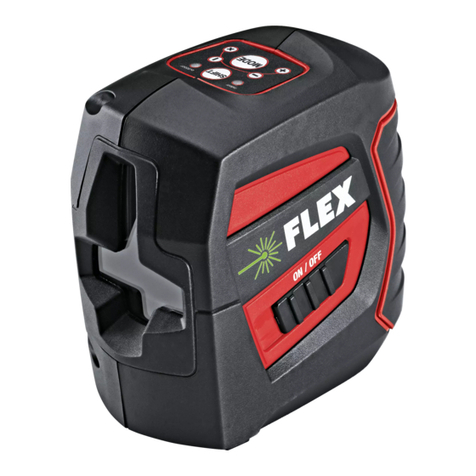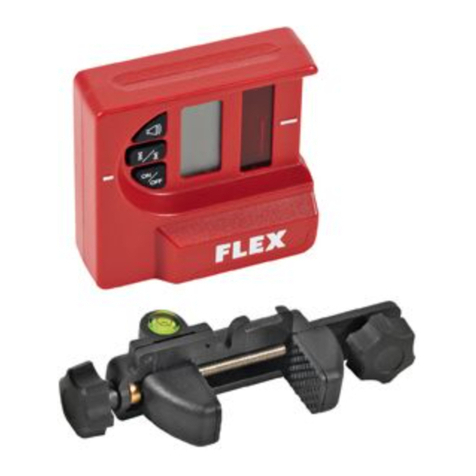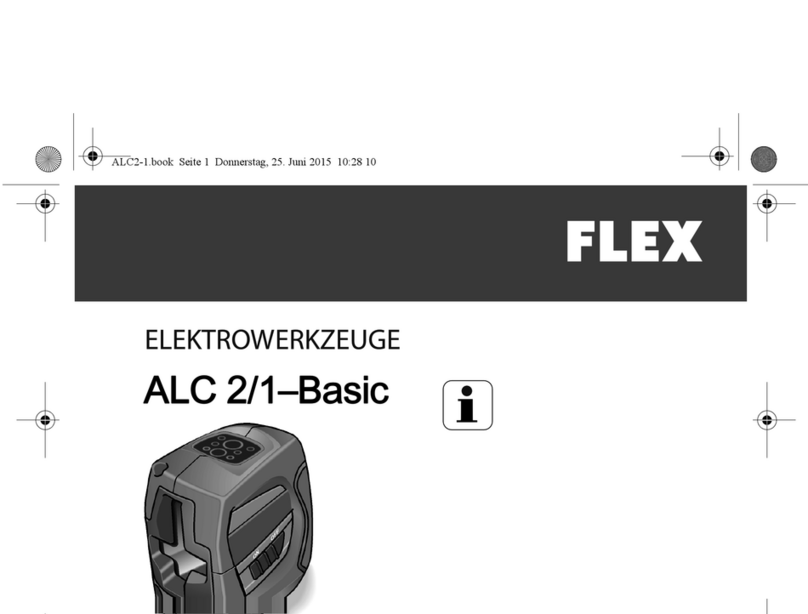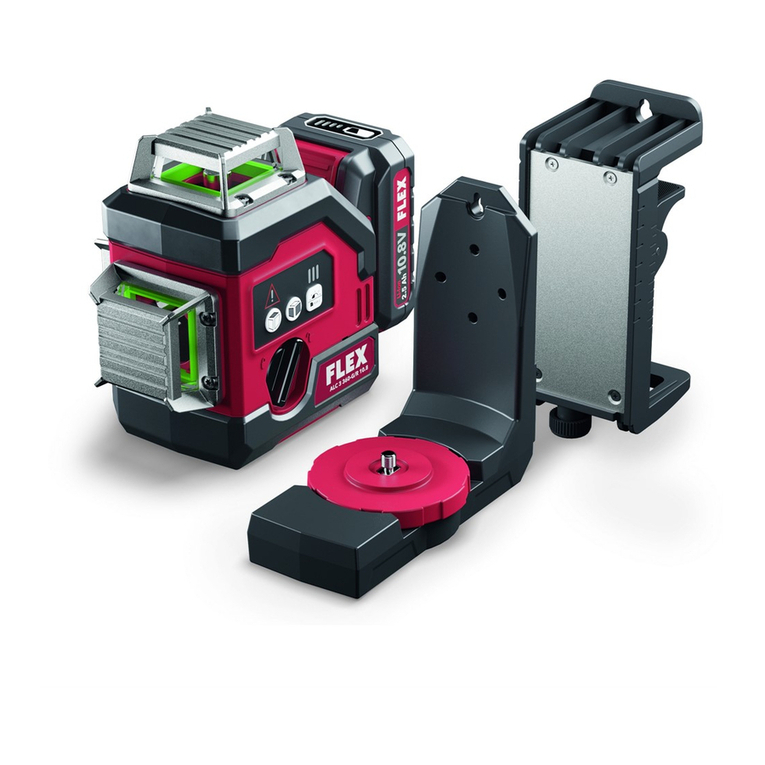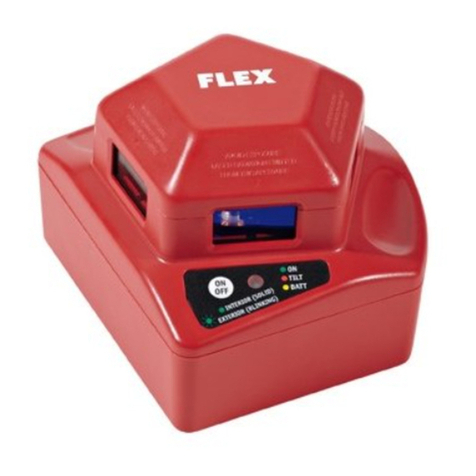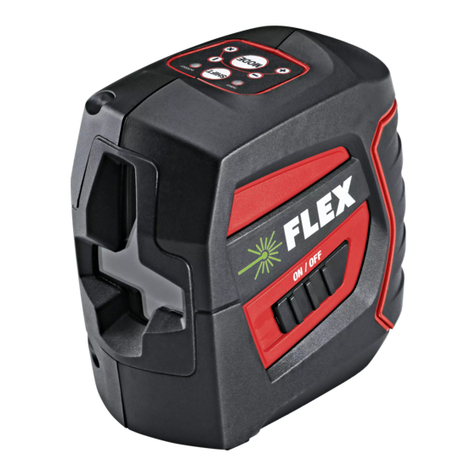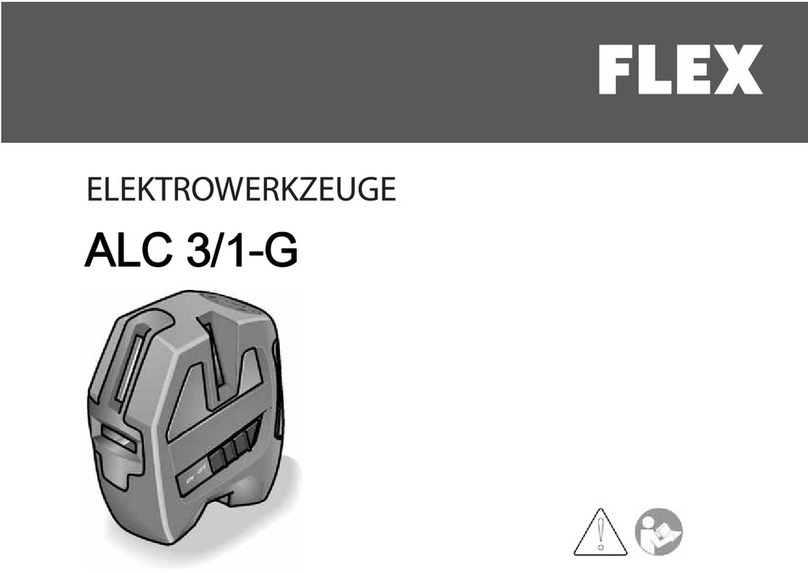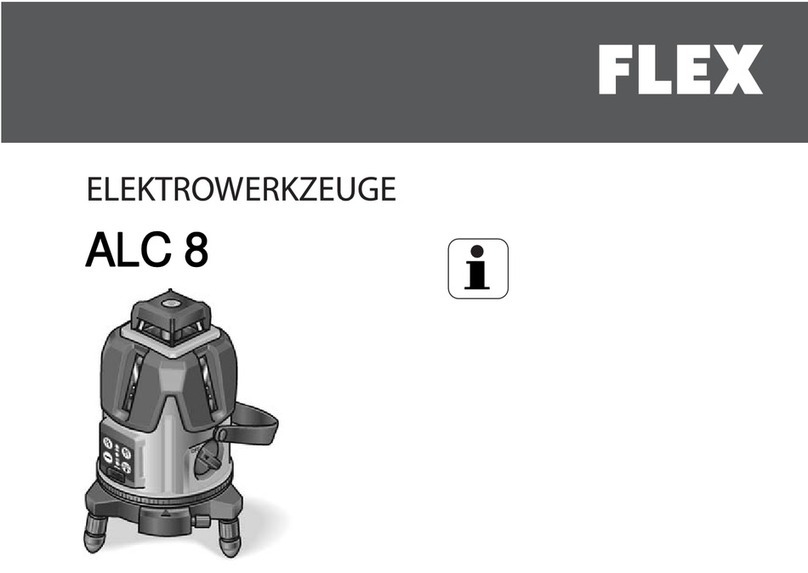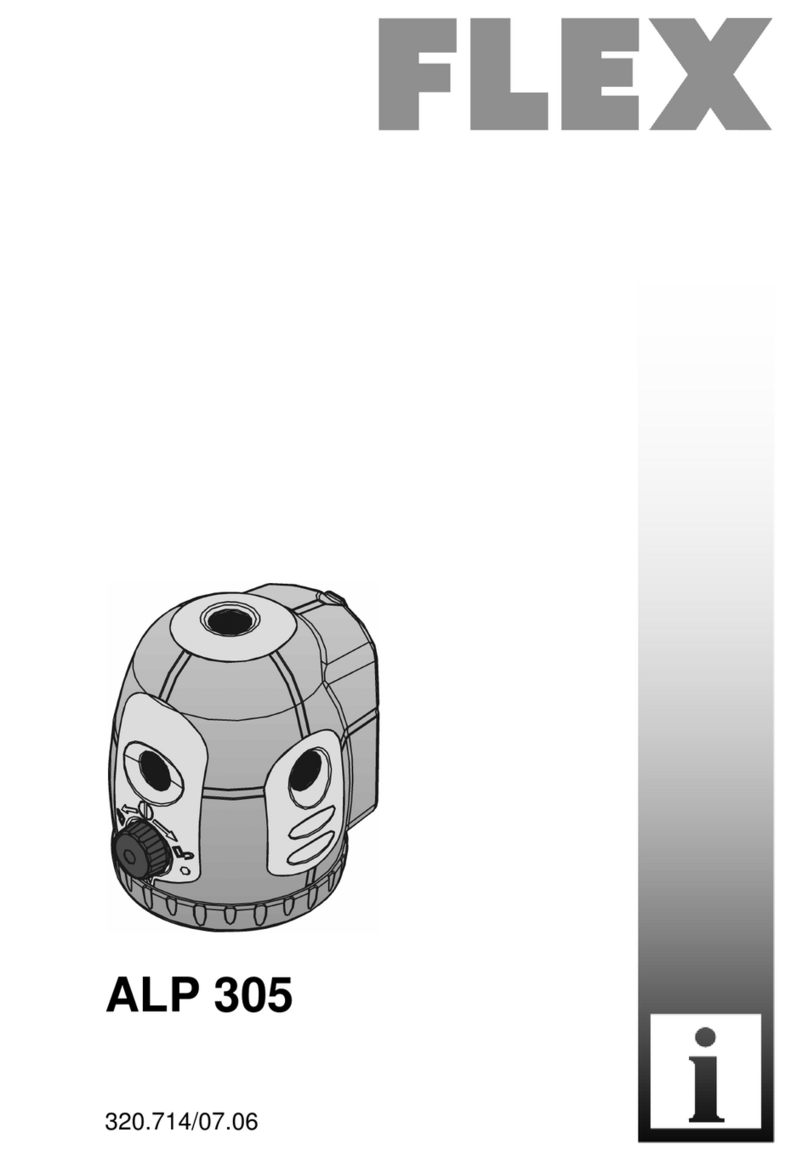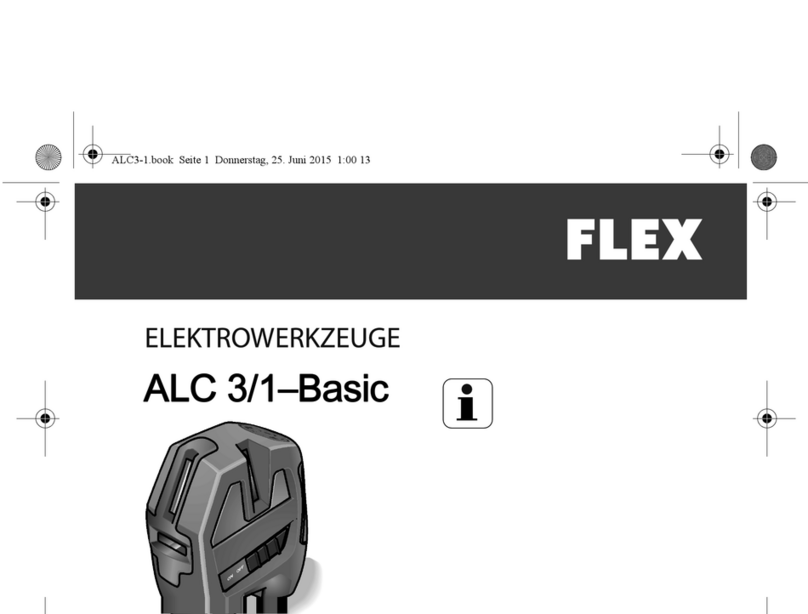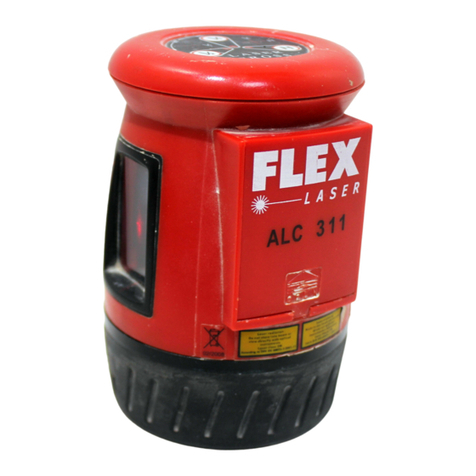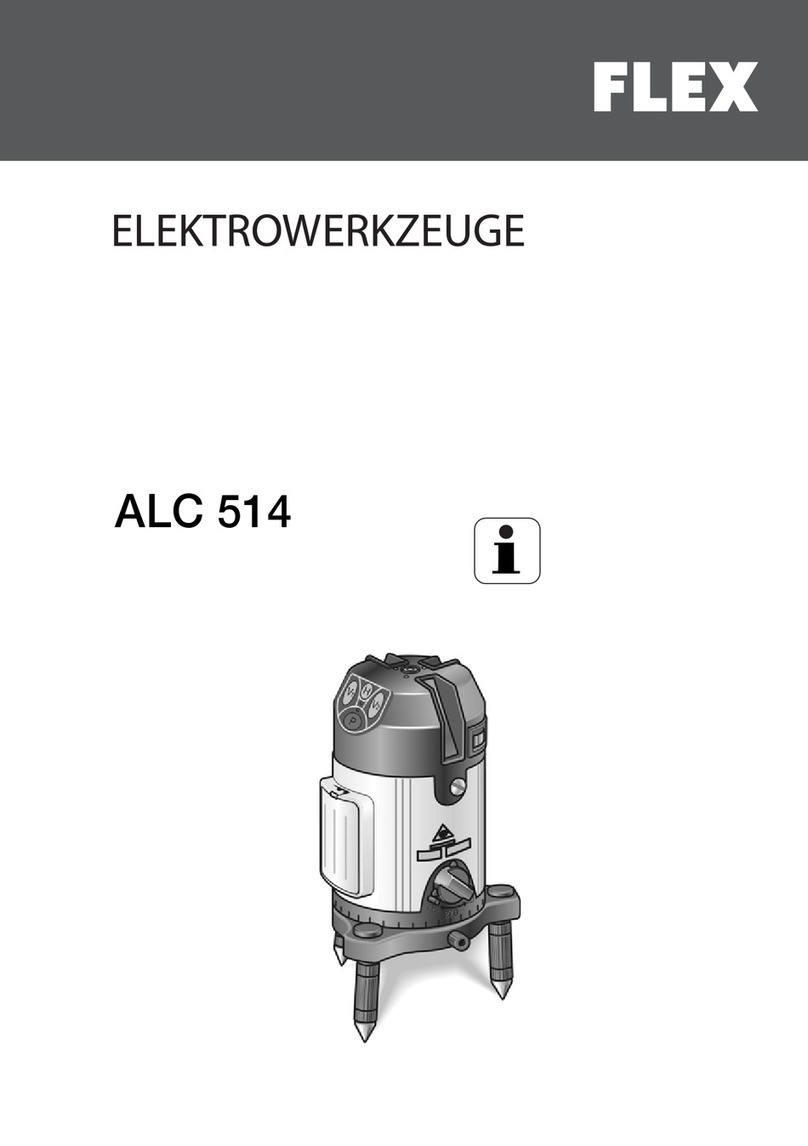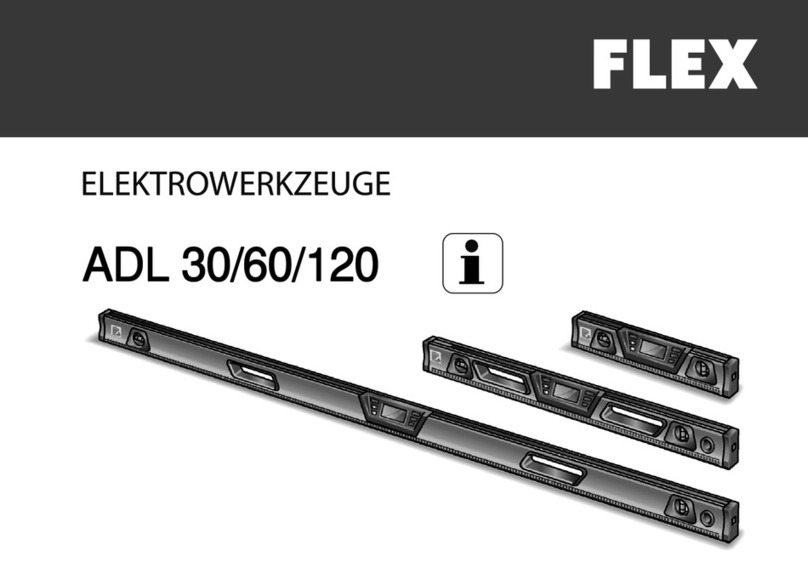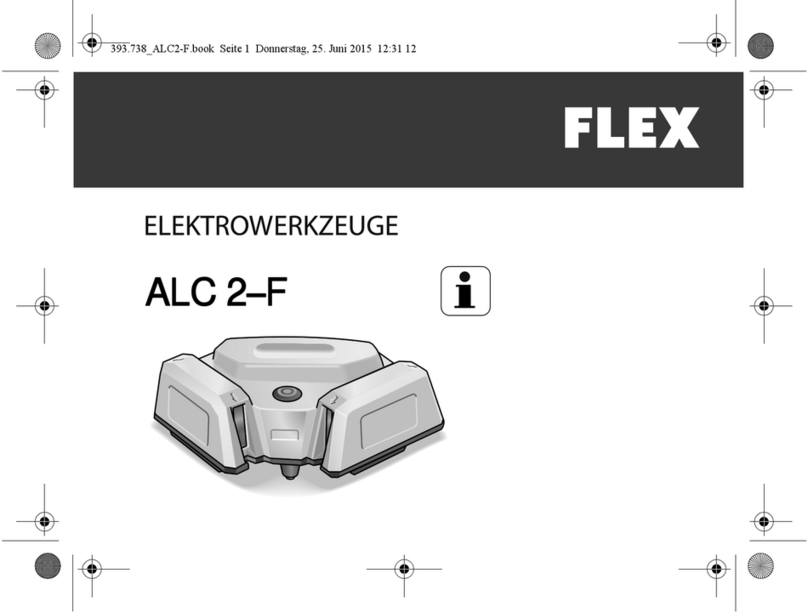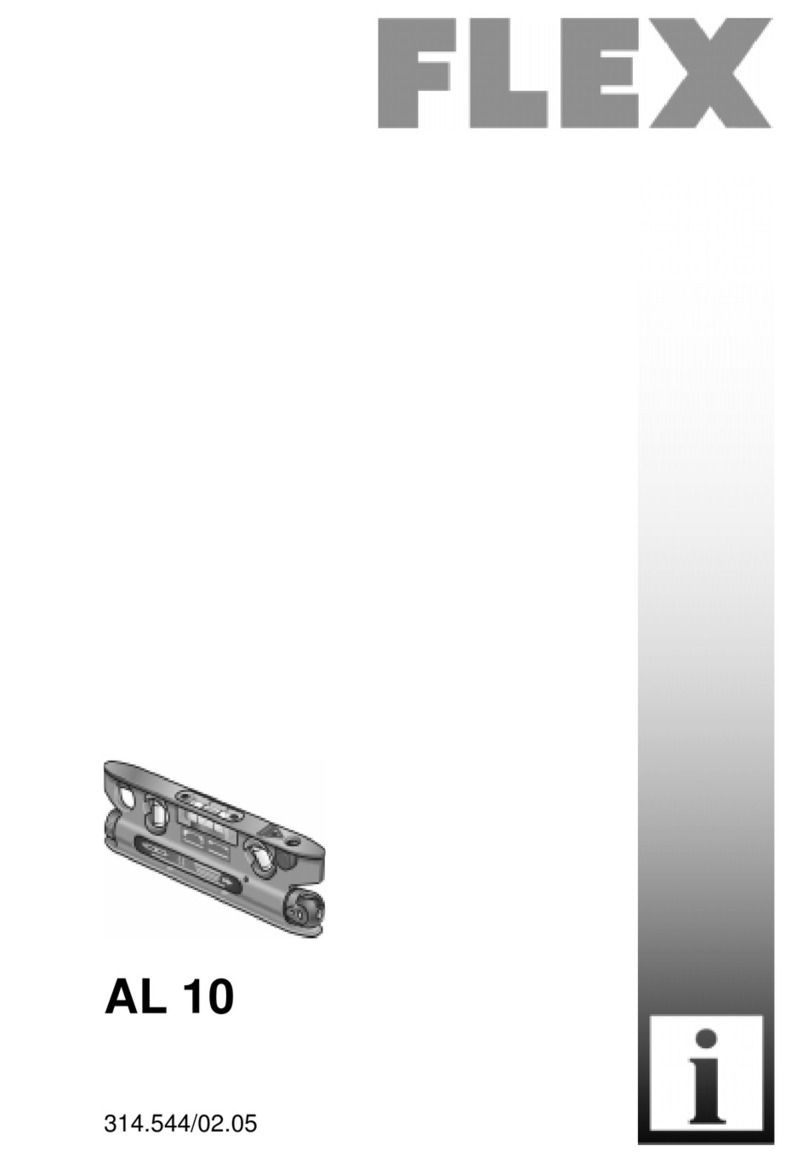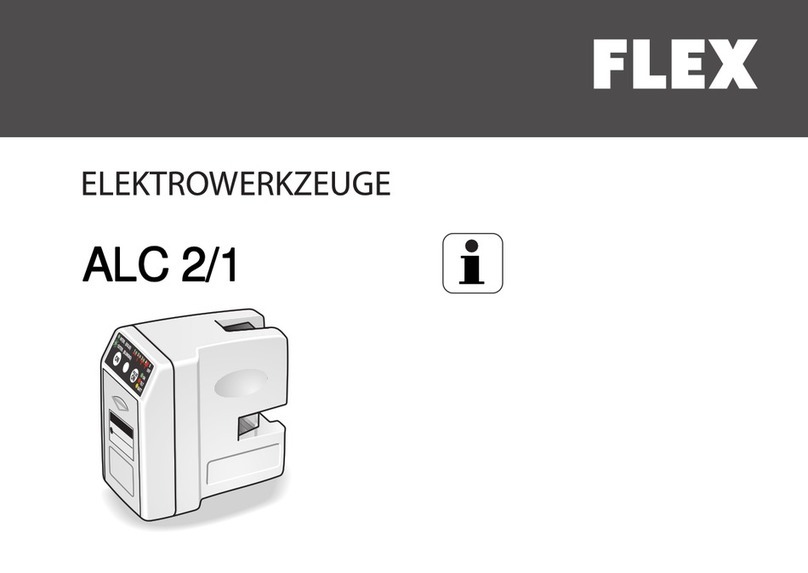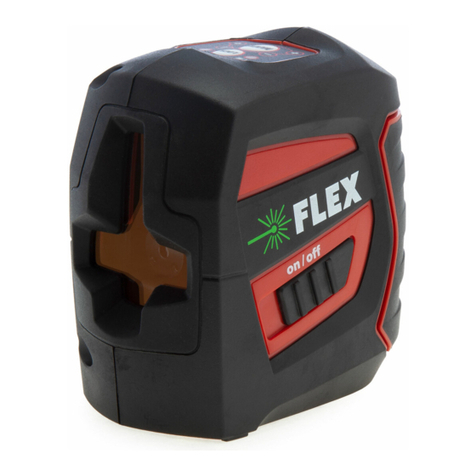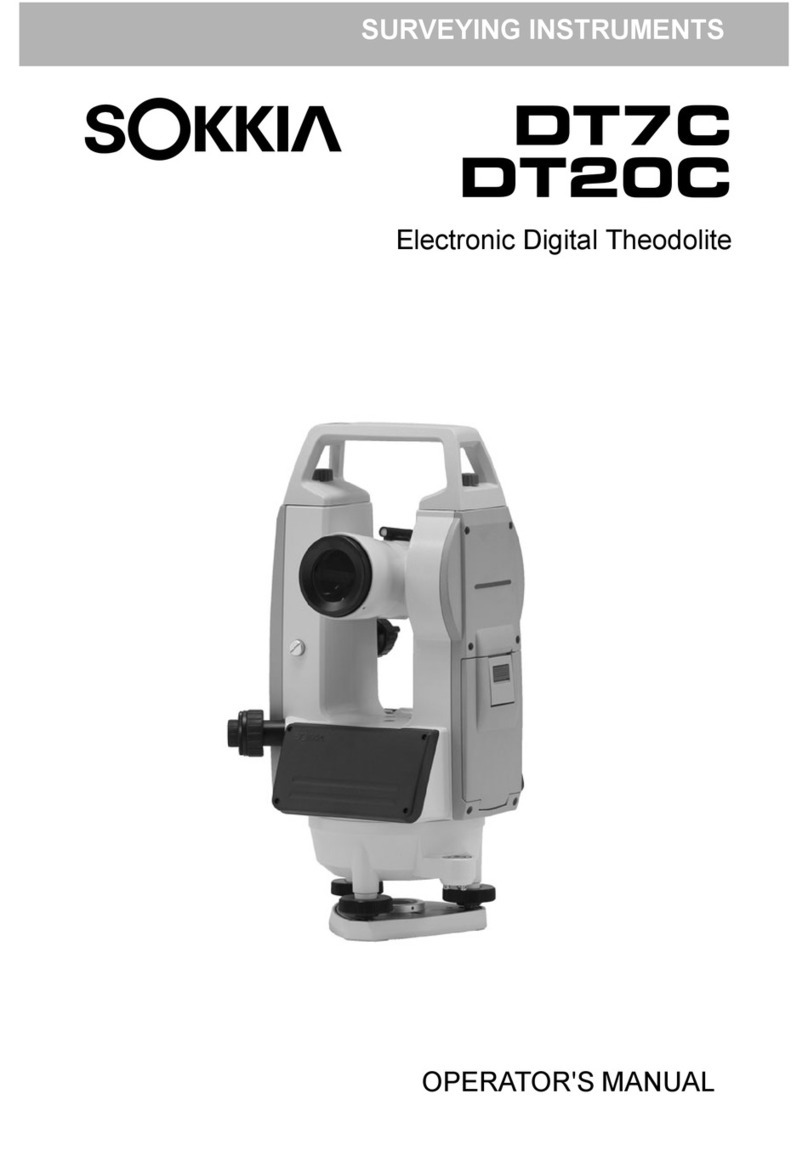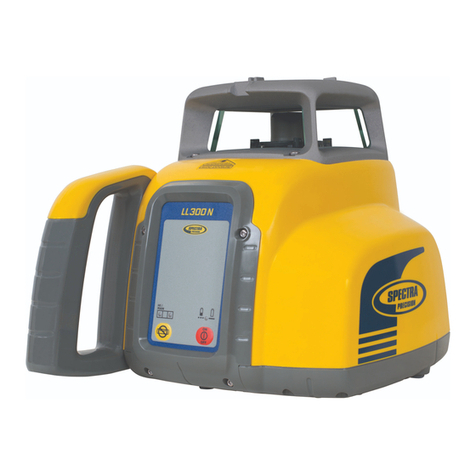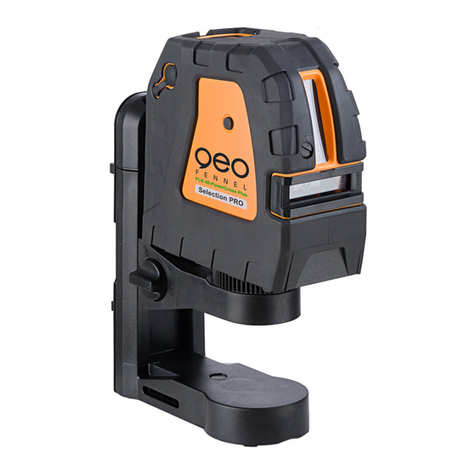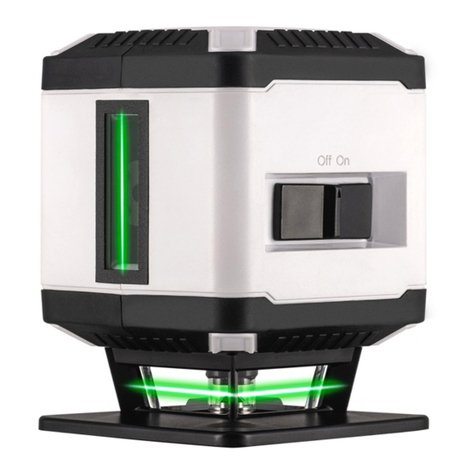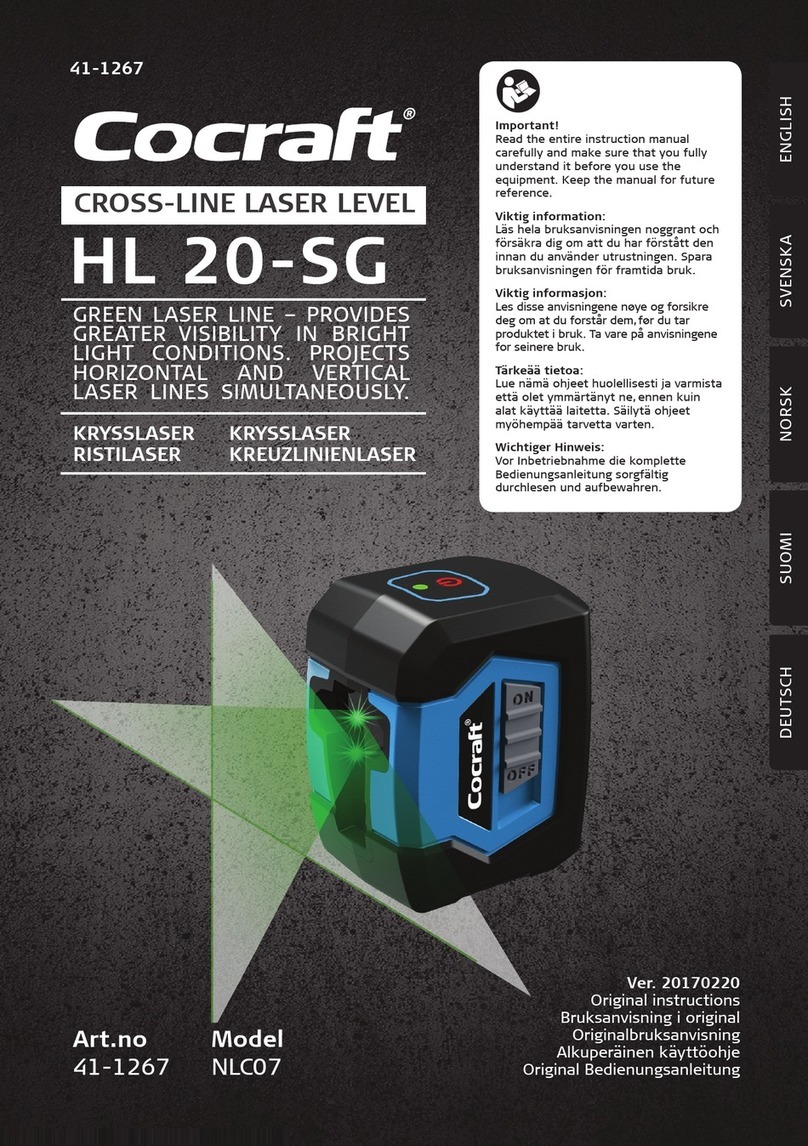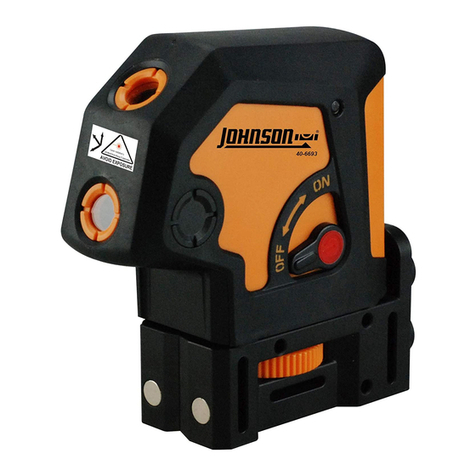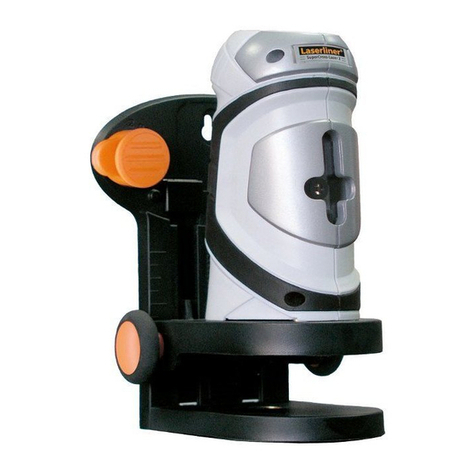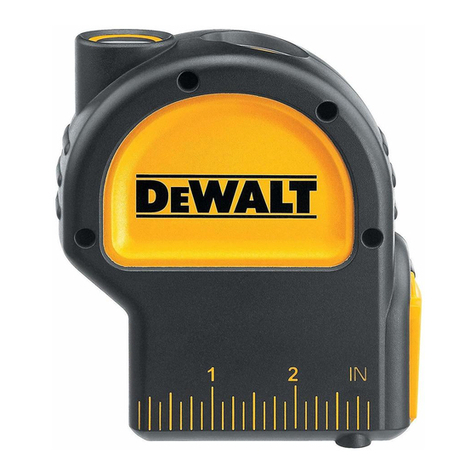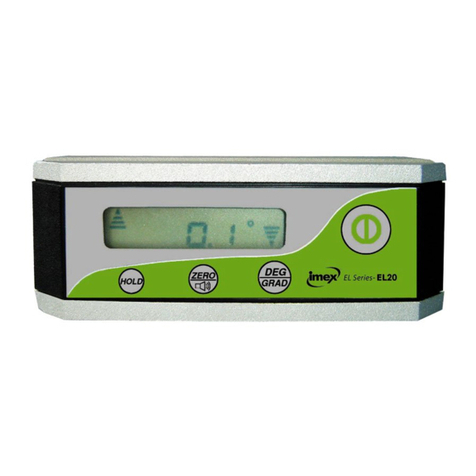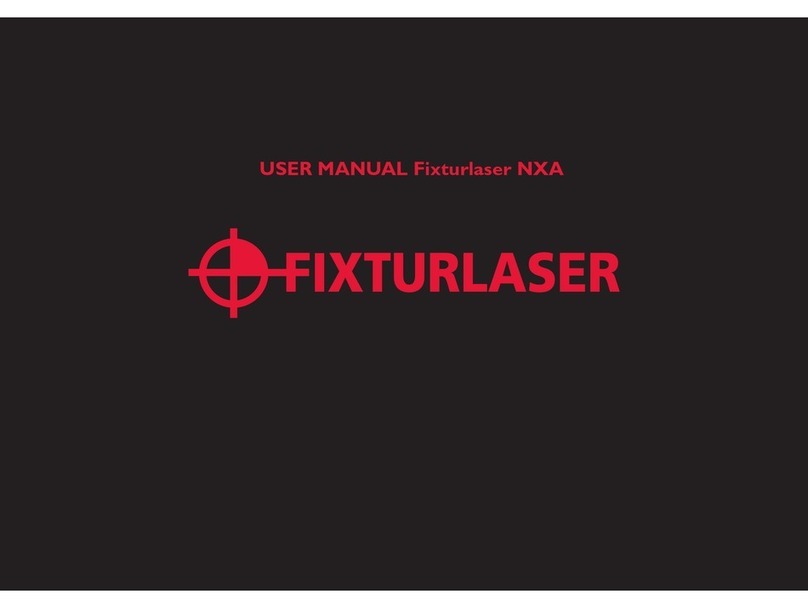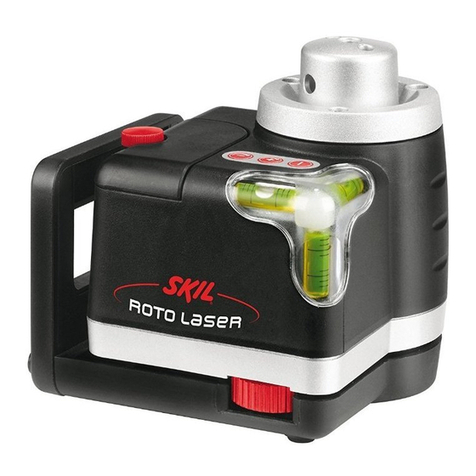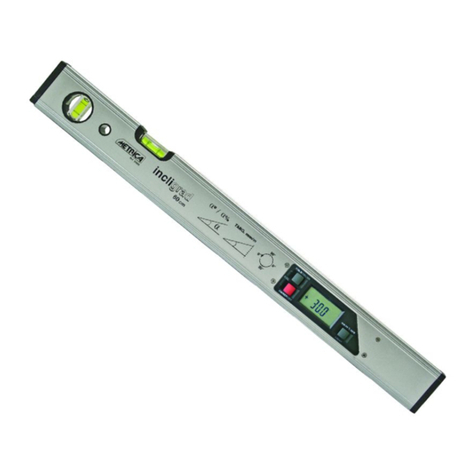
8
ADL 60-P / ADL 120-P
Arbeitsschritte für beide Varianten:
1. Für ca. 3 s die Kalibrierungstaste „Cal“- a
drücken, bis kurz „CAL1“ im Display
erscheint.
2. Die Kalibrierungstaste „Cal“- a erneut
drücken.
„CALI1“ wird blinkend durchlaufen, bis
nach einem Piepton „CAL2“ im Display
angezeigt wird.
3. Das Messwerkzeug um 180° um die
senkrechte Achse drehen, sodass die
Libelle weiterhin nach oben zeigt, das
Display 7 sich jedoch auf der von Ihnen
abgewandten Seite befindet.
4. Warten Sie 4 s! Die Kalibrierungstaste
„Cal“- a erneut drücken.
„CALI2“ wird blinkend durchlaufen, bis
nach einem Piepton „CAL3“ im Display
angezeigt wird.
5. Das Messwerkzeug um 180° um die
waagrechte Achse drehen, sodass die
Libelle nach unten zeigt, das Display 7
sich jedoch auf der von Ihnen
zugewandten Seite befindet.
6. Warten Sie 4 s! Die Kalibrierungstaste
„Cal“- a erneut drücken.
„CALl3“ wird blinkend durchlaufen, bis
nach einem Piepton „CAL4“ im Display
angezeigt wird.
7. Das Messwerkzeug um 180° um die
senkrechte Achse drehen, sodass die
Libelle weiterhin nach unten zeigt, das
Display 7 sich jedoch auf der von Ihnen
abgewandten Seite befindet.
8. Die Kalibrierungstaste „Cal“- a erneut
drücken. Danach erscheint „SUCC“ im
Display.
Das Messwerkzeug ist nun für diese
Auflagefläche neu kalibriert.
HINWEIS
Wird das Messwerkzeug bei den Schritten 3, 5
und 7 nicht um die in den Bildern dargestellte
Achse gedreht, kann die Kalibrierung nicht
abgeschlossen werden.
(„SUCC“ erscheint nicht im Display.)
Wartung und Pflege
Folgende Hinweise beachten:
Messwerkzeug vorsichtig behandeln und
vor Stößen, Vibrationen, extremen
Temperaturen schützen.
Messwerkzeug bei Nichtgebrauch in
Schutztasche aufbewahren.
Bei längerem Nichtgebrauch Batterien/
Akkus aus dem Messwerkzeug entfernen.
